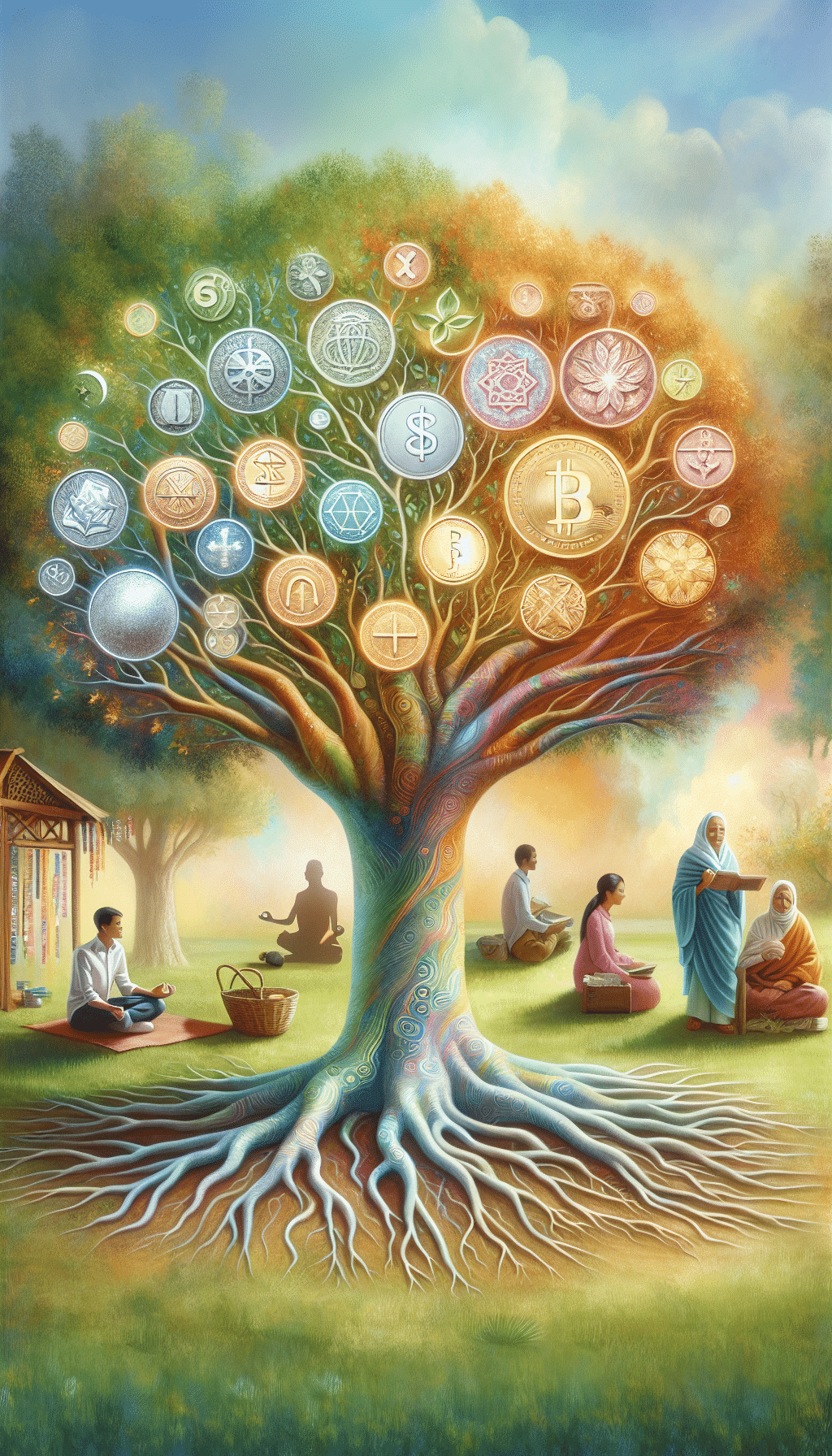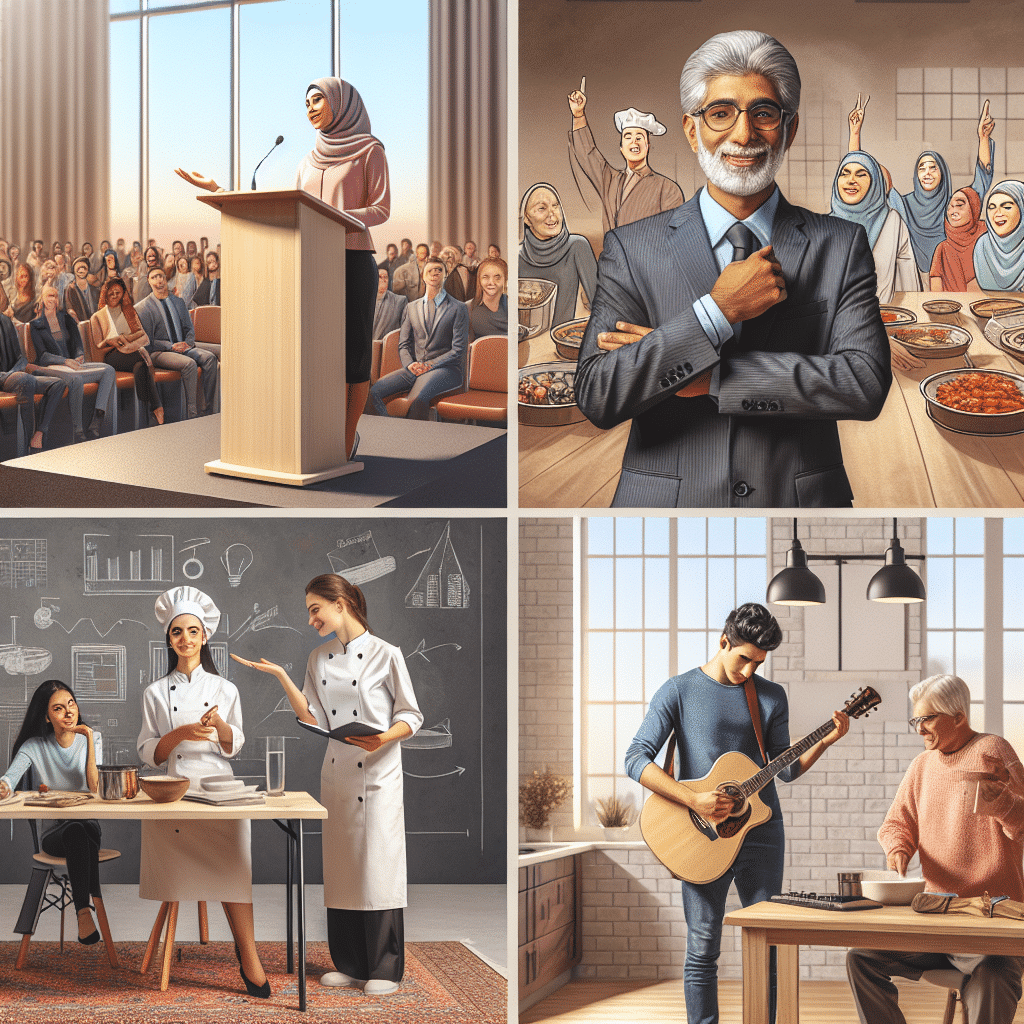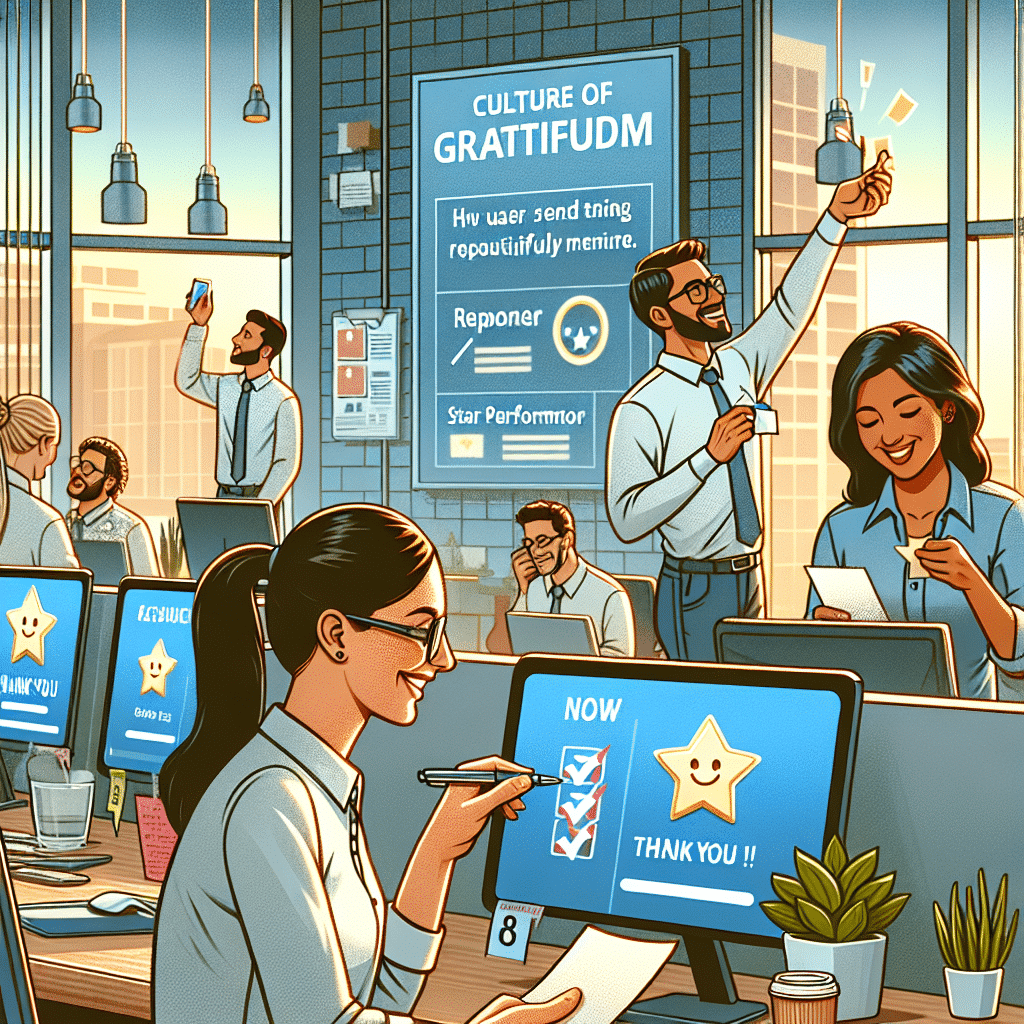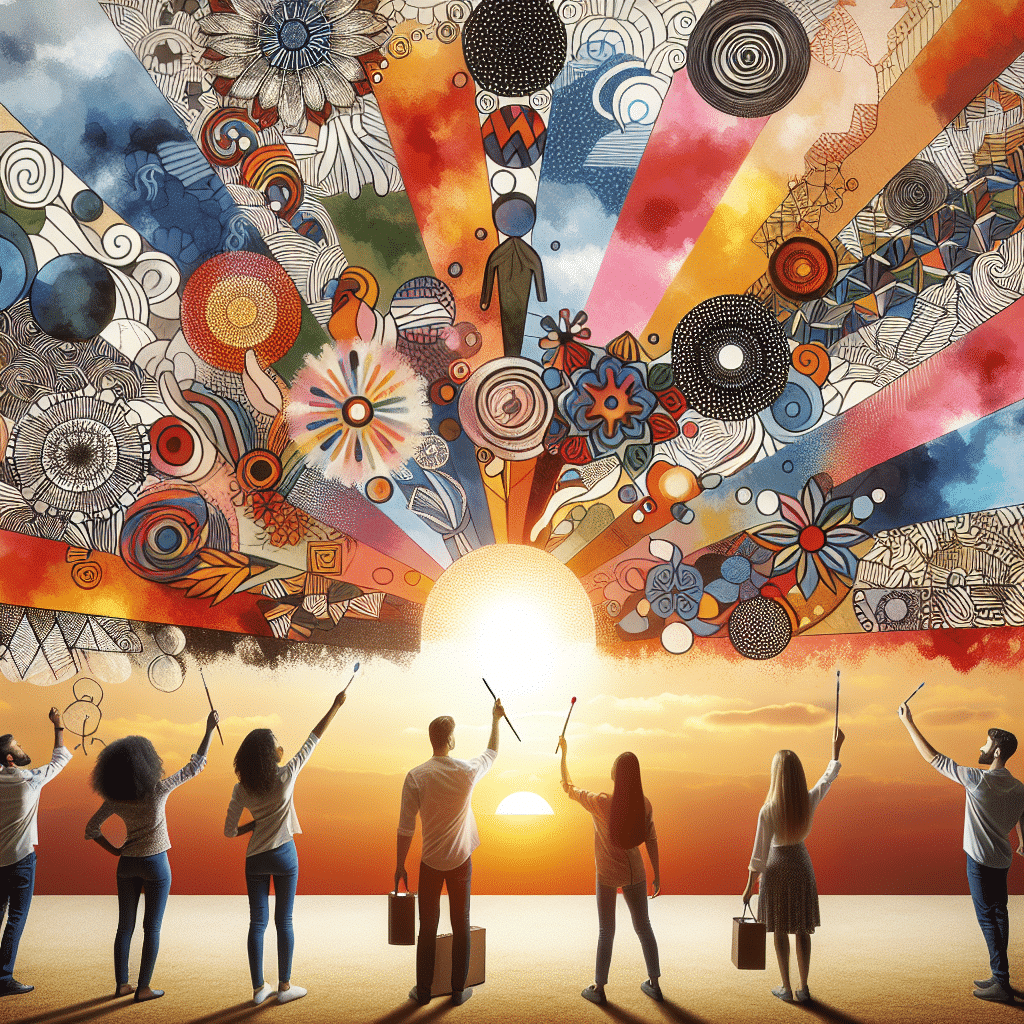
Creativity is a universal phenomenon that transcends geographical boundaries, cultural differences, and societal norms. It is the ability to generate novel ideas, concepts, and solutions that are valuable and impactful. Global perspectives on creativity shed light on how different cultures perceive, nurture, and harness creative thinking.
Creativity can be defined as the ability to think outside the box, connect disparate ideas, and come up with innovative solutions to problems. It involves combining existing knowledge and ideas in new ways to generate original and valuable outcomes. While the concept of creativity is universal, its practical expression varies across different cultures and societies.
Cultural influences play a significant role in shaping creativity. Each culture has its unique beliefs, values, and practices that shape individuals’ attitudes and behaviors towards creativity. For example, some cultures may prioritize conformity and obedience to societal norms, which can hinder original thinking and experimentation. In contrast, other cultures may emphasize individuality, open-mindedness, and exploration, thereby promoting a more innovative and creative mindset.
The role of education in fostering creativity cannot be overstated. Educational systems can either enhance or inhibit creative thinking and problem-solving skills in students. In some societies, traditional educational approaches may focus heavily on rote learning, standardized testing, and rigid curriculum, leaving little room for divergent thinking and creativity. Conversely, progressive educational systems that prioritize experiential learning, exploration, and critical thinking can cultivate creativity in individuals.
Technology has emerged as a powerful tool for fostering creativity on a global scale. With the advent of the internet and digital tools, individuals now have access to vast amounts of information, resources, and collaborative platforms. Technology allows people from different corners of the world to connect, share ideas, and collaborate on creative projects, transcending geographical limitations. This interconnectedness fosters a global exchange of perspectives, knowledge, and creativity, leading to the emergence of novel and innovative ideas.
Global perspectives on creativity bring together diverse viewpoints, experiences, and cultural practices, contributing to a more holistic and inclusive understanding of creativity. By examining creativity from a global lens, we gain insights into the similarities and differences in the creative processes and outputs across cultures. This cross-cultural understanding can foster collaboration and cooperation, leading to the development of groundbreaking ideas and solutions with worldwide implications.
Cultural Influences on Creativity
Creativity is a concept that is influenced by cultural factors. Different cultures have their unique ways of perceiving and expressing creativity. Cultural beliefs, values, and traditions shape the way individuals approach and engage with creativity.
One of the key ways in which culture influences creativity is through the cultural norms and expectations regarding creative expression. In some cultures, creativity may be highly valued and encouraged from a young age, while in others it may be seen as less important or even discouraged. These cultural attitudes can significantly impact an individual’s motivation and willingness to explore their creative abilities.
Cultural diversity also plays a crucial role in shaping the variety and range of creative ideas and perspectives. When people from different backgrounds come together, they bring with them their unique cultural experiences, knowledge, and ways of thinking. This diversity fosters a rich and vibrant creative environment, as it allows for the exchange and synthesis of different perspectives and ideas.
Furthermore, cultural influences can be seen in the specific themes and concepts that are commonly explored in creative works. Each culture has its own set of values, traditions, and symbols, which find their way into various forms of artistic expression. For example, traditional dance forms, music, and visual arts often reflect the cultural identity and history of a particular community or country.
Moreover, cultural influences on creativity extend beyond artistic expression to other domains of human endeavor. For instance, business practices, technological innovations, and scientific discoveries are all influenced by the cultural contexts in which they emerge. The values, beliefs, and societal norms associated with a particular culture can shape the way individuals approach problem-solving, innovation, and the generation of new ideas.
Therefore, a global perspective on creativity involves recognizing and embracing the diverse cultural influences on creative expression. By appreciating and understanding different cultural perspectives, we can foster an environment that celebrates creativity in all its forms. This can be facilitated through cross-cultural collaborations, the exchange of ideas, and the promotion of cultural diversity in educational and professional settings.
III. Education and Creativity
In today’s increasingly interconnected world, creativity is a valuable skill that is highly sought after by employers and society as a whole. As such, education plays a crucial role in fostering and nurturing creativity in individuals.
One of the key challenges in education systems worldwide is the emphasis on standardized testing and rote learning, which can stifle creativity. However, there is a growing recognition that creativity cannot be taught in isolation; it needs to be integrated into the curriculum and encouraged in all subjects.
Global perspectives on creativity in education emphasizes the need for a balanced approach that combines academic rigor with opportunities for students to explore and express their creativity. This includes providing students with a range of learning experiences that encourage critical thinking, problem-solving, and collaboration.
Several models and approaches to education have emerged from different parts of the world, each with its own emphasis on creativity. For example, Finland’s education system is widely regarded as one of the best in the world, largely due to its focus on fostering creativity and innovation. In Finnish classrooms, students have more autonomy and flexibility in their learning, and teachers are seen as facilitators rather than authority figures. This approach allows students to develop their creativity and independent thinking skills.
Similarly, the Reggio Emilia approach in Italy encourages creativity through hands-on, experiential learning. Students are encouraged to explore their interests and passions, and the curriculum is designed to be flexible and responsive to their individual needs. This approach recognizes that every child is unique and has their own creative potential.
Technology also plays a crucial role in fostering creativity in education. The use of digital tools and resources can enable students to engage in diverse forms of expression and create innovative solutions to real-world problems. For example, students can use multimedia tools to create videos, animations, and digital artwork, or collaborate online with peers from different parts of the world.
Overall, global perspectives on creativity in education emphasize the importance of creating a supportive and inclusive learning environment that values and nurtures creativity in all its forms. By integrating creativity into the curriculum and utilizing technology as a tool, educators can empower students to become creative thinkers and problem-solvers who are well-equipped to thrive in the 21st century global economy.
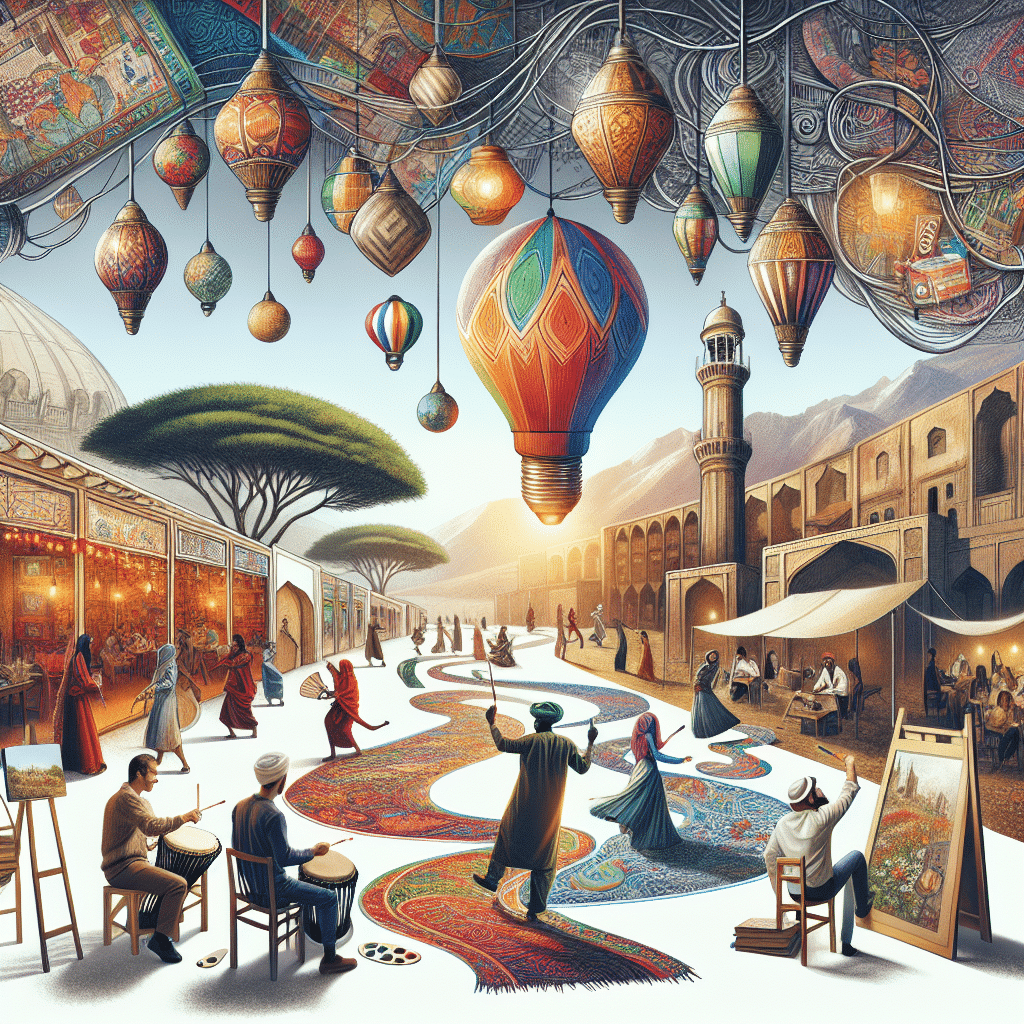
The Role of Technology in Fostering Creativity
In today’s global society, technology has revolutionized the way we live and work. It has also significantly impacted the realm of creativity. With the advent of digital tools and platforms, individuals from around the world have unprecedented access to resources that can nurture and enhance their creative abilities.
The democratization of creativity
Technology has leveled the playing field and empowered individuals from all walks of life to express their creativity. Online platforms and social media have provided a stage for people to showcase their artistic talents and ideas to a global audience. Blogging, vlogging, and podcasting have become popular mediums for individuals to share their unique perspectives and creative endeavors. The ability to reach and engage with a global audience has fueled inspiration and further nurtured creativity.
Collaborative opportunities
Technology has also facilitated collaboration among creatives on a global scale. Online platforms, such as virtual workspaces and collaboration tools, allow individuals with diverse skill sets and perspectives to come together and create something truly innovative. This interconnectedness has opened doors to cross-cultural collaborations, enabling the exchange of ideas and the fusion of different artistic styles and cultural influences. Through these collaborations, individuals can learn from one another, expand their horizons, and create work that reflects a global perspective.
Access to information and inspiration
Technology has made information and inspiration easily accessible to anyone with an internet connection. Online databases, archives, and libraries have digitized vast collections of artistic works, allowing individuals to explore different art forms and draw inspiration from diverse cultures and time periods. Online communities and forums provide platforms for individuals to discuss and share creative ideas, sparking new insights and encouraging experimentation. The wealth of resources available online fosters a global exchange of ideas, which in turn fuels creativity.
The role of AI and automation
Advancements in artificial intelligence (AI) and automation have also impacted creativity. Techniques such as machine learning and data analysis can generate insights and patterns that can inspire new creative directions. AI tools can assist in the creative process by automating repetitive tasks, freeing up time for individuals to focus on more impactful and innovative work. However, it is important to strike a balance and ensure that technology remains a tool for human creativity rather than a replacement.
In conclusion, technology has significantly influenced creativity on a global scale. It has democratized creativity, provided opportunities for collaboration, facilitated access to information and inspiration, and even introduced AI and automation as creative tools. As technology continues to advance, it will be interesting to see how it further shapes and enhances the creative process.
Impacts of Global Perspectives on Creativity
Global perspectives on creativity have had a significant impact on the way individuals, organizations, and societies approach creative thinking and innovation. These perspectives have broadened the understanding of creativity and its role in various cultural contexts, leading to new insights and approaches.
Cultural Diversity and Creativity
One of the major impacts of global perspectives on creativity is the recognition of the influence of cultural diversity on creative thinking. Different cultures have unique ways of viewing and expressing creativity, and this diversity has a profound impact on the creative process.
For example, in some cultures, creativity may be more focused on collective efforts and community contributions, while in others, it may be more individualistic and self-expression-oriented. By acknowledging and valuing these diverse perspectives, global perspectives on creativity encourage a more inclusive and comprehensive approach to creative thinking.
Exchange of Ideas and Cross-Cultural Collaboration
The globalization of communication and transportation has made it easier for individuals from different parts of the world to exchange ideas and collaborate on creative projects. This exchange of ideas and cross-cultural collaboration has fostered the development of new and innovative approaches to creativity.
By connecting individuals with diverse cultural backgrounds, global perspectives enable the sharing of unique perspectives, knowledge, and skills. This cross-pollination of ideas not only enriches the creative process but also fosters a greater understanding and appreciation for different cultures.
Transcending Boundaries and Challenging Norms
Global perspectives on creativity encourage individuals and organizations to transcend boundaries and challenge traditional norms and conventions. This mindset shift opens up new possibilities for innovation and creative thinking.
By exposing individuals to diverse cultural perspectives and alternative ways of thinking, global perspectives on creativity challenge the status quo and encourage a more open-minded and flexible approach to problem-solving. This can lead to groundbreaking ideas and solutions that may not have been possible within a narrow or homogeneous mindset.
Social and Environmental Consciousness
Global perspectives on creativity also promote a greater awareness of social and environmental issues and their relationship to creative thinking. Creativity is increasingly recognized as a powerful tool for addressing societal challenges and driving positive change.
By considering global perspectives and the interconnectedness of various social and environmental issues, individuals and organizations can approach creativity with a more conscious and purpose-driven mindset. This can lead to the development of creative solutions that have a positive impact on both local and global scales.
In conclusion
Global perspectives on creativity have revolutionized the way creativity is understood and approached. By recognizing the influence of cultural diversity, promoting cross-cultural collaboration, challenging norms, and fostering social and environmental consciousness, these perspectives have enriched the creative process and opened up new possibilities for innovation and problem-solving.
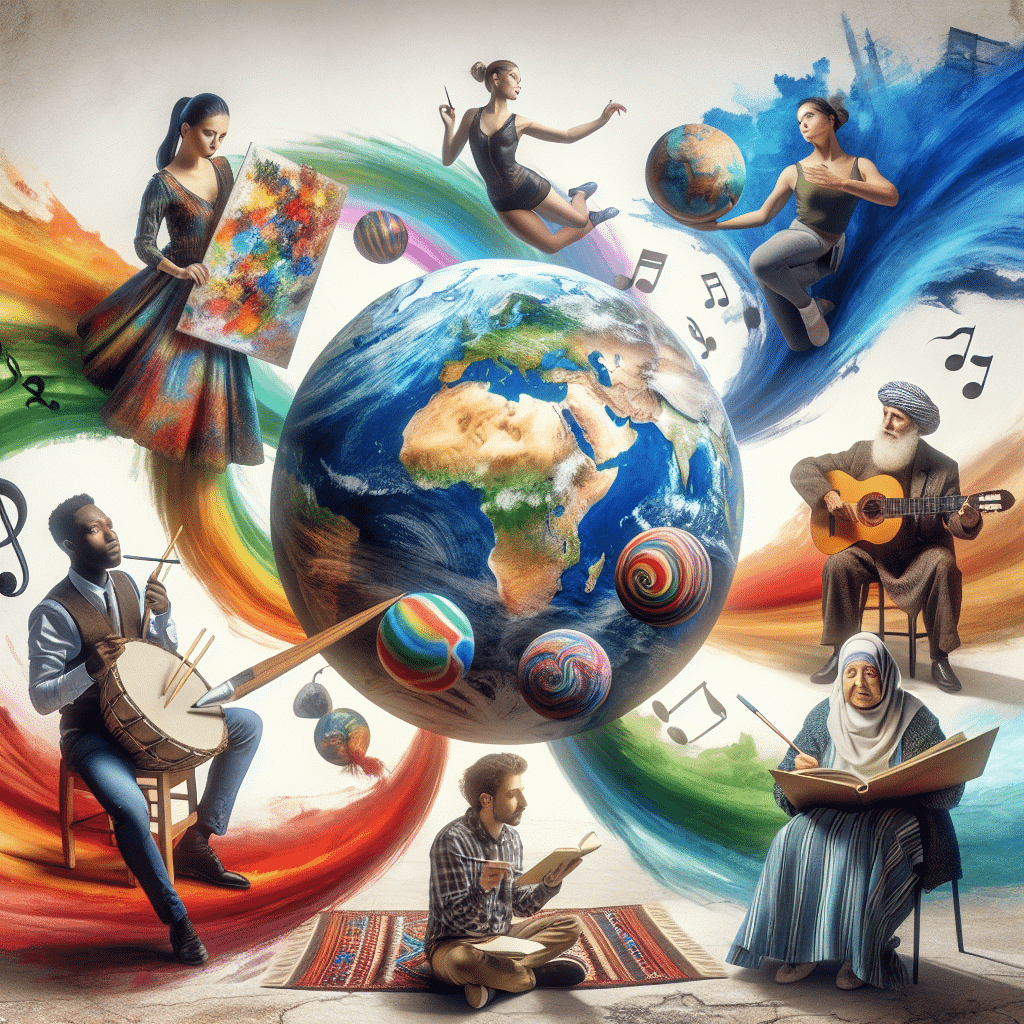
Summary
As a complex and multifaceted concept, creativity can be defined as the ability to generate new and valuable ideas, expressions, or solutions. Cultural influences play a vital role in shaping creative thinking, as different cultures have unique perspectives and preferences when it comes to creativity. Education also plays a crucial role in fostering creativity, as it helps individuals cultivate their creative skills and encourages innovative thinking. Technology has become an integral part of the creative process, providing tools and platforms for individuals to express their creativity. Lastly, global perspectives on creativity have significant impacts on the development and expression of creative ideas, as diverse perspectives and experiences contribute to a richer and more innovative creative output.



